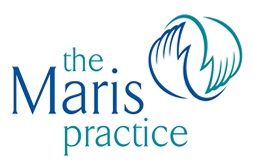In the fast-paced world of sports, athletes are continually seeking ways to enhance performance, prevent injuries, and expedite recovery. One therapeutic approach which continues to gain significant traction is Osteopathy. Osteopathy, a form of manual therapy, emphasises the interrelationship between the structure and function of the body, aiming to promote self-healing and overall well-being. Its holistic nature makes it particularly appealing in the athletic community.
Understanding Osteopathy
Osteopathy is based on the principle that the body’s structure (bones, muscles, and connective tissues) and its function (movements and physiological processes) are intrinsically linked. Osteopaths use their hands to diagnose, treat, and prevent health issues, employing techniques such as stretching, gentle pressure, and resistance to improve mobility, reduce pain, and enhance circulation.
Benefits for Athletes
Injury Prevention and Recovery: Osteopathy can play a pivotal role in both preventing and rehabilitating sports injuries. By ensuring optimal alignment and function of the musculoskeletal system, osteopaths help athletes reduce the risk of injuries such as strains, sprains, and tendonitis. Post-injury, osteopathic treatment can accelerate recovery, helping athletes return to peak performance more quickly.
Enhanced Performance: Regular osteopathic treatment can lead to improved biomechanical efficiency. By addressing any structural imbalances or restrictions, osteopaths enable athletes to move more freely and with better coordination, ultimately enhancing their performance.
Pain Management: Chronic pain or discomfort can significantly hinder an athlete’s ability to train and compete. Osteopathy provides a non-invasive, drug-free approach to pain management, offering relief from conditions like lower back pain, neck pain, and joint discomfort, which are common among athletes.
Holistic Health: Osteopathy doesn’t just focus on the symptoms but looks at the overall health of the athlete. This comprehensive approach ensures that all factors, including lifestyle, nutrition, and mental health, are considered, promoting long-term health and wellness.
Case Studies and Real-World Examples
Many professional athletes have embraced Osteopathy as part of their regular healthcare regimen. For instance, renowned tennis players and footballers have publicly credited Osteopathy with aiding their recovery and maintaining their competitive edge. These testimonials highlight the growing recognition of Osteopathy’s benefits in the sports world.
Conclusion
As the demand for holistic and effective health care continues to rise, Osteopathy is poised to become a cornerstone in Sports Medicine. Its ability to enhance performance, prevent injuries, and promote overall well-being makes it an invaluable resource for athletes at all levels. Whether you’re a weekend warrior or a professional athlete, incorporating osteopathy into your training regimen could be the key to unlocking your full potential.

